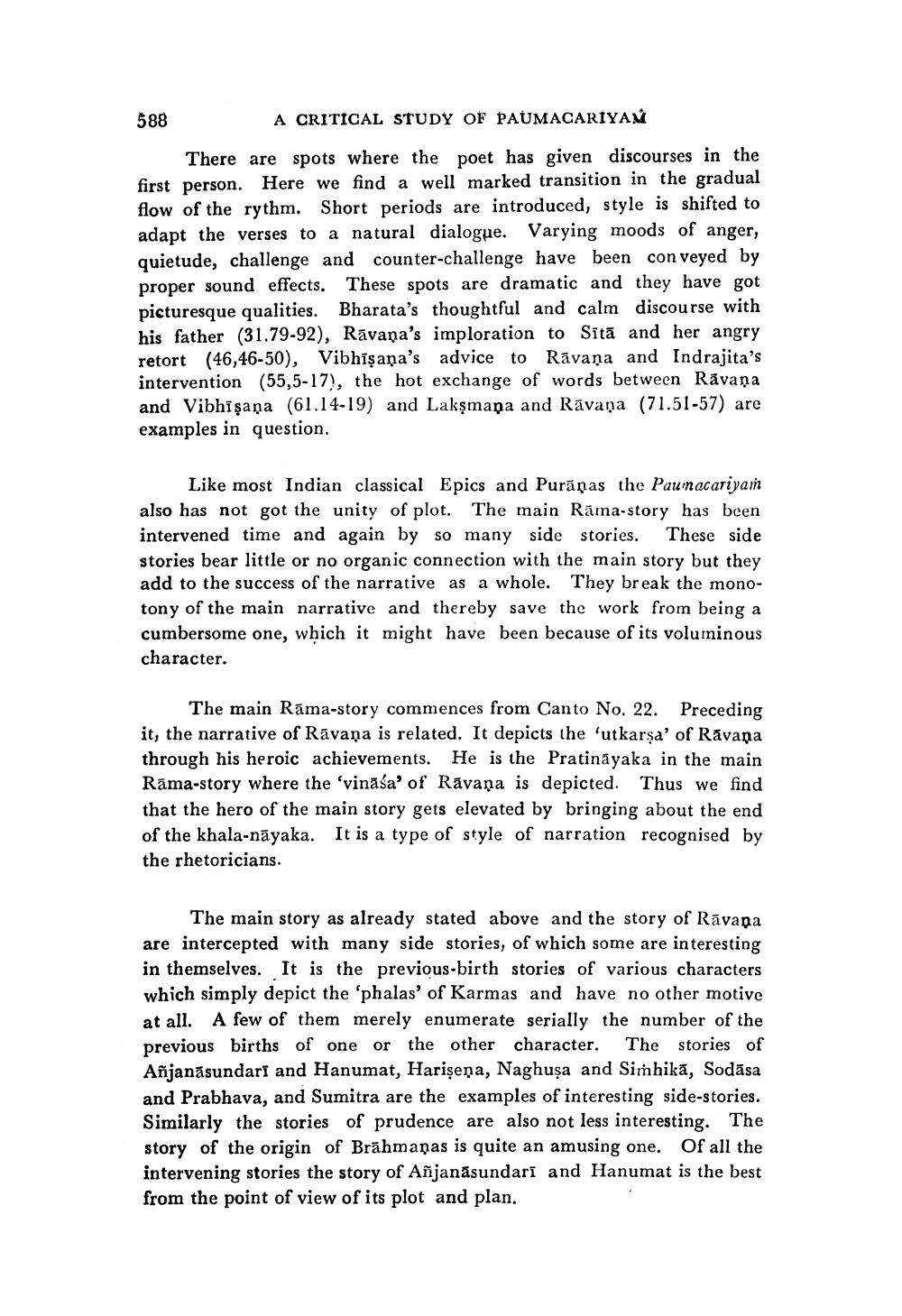________________
588
A CRITICAL STUDY OF PAUMACARIYAM
There are spots where the poet has given discourses in the first person. Here we find a well marked transition in the gradual flow of the rythm. Short periods are introduced, style is shifted to adapt the verses to a natural dialogue. Varying moods of anger, quietude, challenge and counter-challenge have been con veyed by proper sound effects. These spots are dramatic and they have got picturesque qualities. Bharata's thoughtful and calm discourse with his father (31.79-92), Rāvana's imploration to Sítā and her angry retort (46,46-50), Vibhīşana's advice to Rāvana and Indrajita's intervention (55,5-17), the hot exchange of words between Rāvana and Vibhişana (61.14-19) and Lakşmana and Rāvaņa (71.51-57) are examples in question.
Like most Indian classical Epics and Purāņas the Paumacariyan also has not got the unity of plot. The main Rāma-story has been intervened time and again by so many side stories. These side stories bear little or no organic connection with the main story but they add to the success of the narrative as a whole. They break the monotony of the main narrative and thereby save the work from being a cumbersome one, which it might have been because of its voluminous character.
The main Rama-story commences from Canto No. 22. Preceding it, the narrative of Rāvana is related. It depicts the 'utkarşa’ of Rāvana through his heroic achievements. He is the Pratināyaka in the main Rāma-story where the 'vināśa' of Rāvana is depicted. Thus we find that the hero of the main story gets elevated by bringing about the end of the khala-nāyaka. It is a type of style of narration recognised by the rhetoricians.
The main story as already stated above and the story of Rāvana are intercepted with many side stories, of which some are interesting in themselves. It is the previous-birth stories of various characters which simply depict the 'phalas' of Karmas and have no other motive at all. A few of them merely enumerate serially the number of the previous births of one or the other character. The stories of Añjanasundari and Hanumat, Harişeņa, Naghușa and Simhikā, Sodāsa and Prabhava, and Sumitra are the examples of interesting side-stories. Similarly the stories of prudence are also not less interesting. The story of the origin of Brāhmaṇas is quite an amusing one. Of all the intervening stories the story of Añjanasundari and Hanumat is the best from the point of view of its plot and plan.




